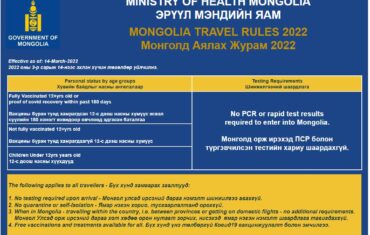The question of whether Mongolia is really a country in East Asia is an interesting subject to discuss. History and politics have greatly influenced the current situation in Mongolia and there are many misconceptions as to what people believe to be true about Mongolia.

Geography
Geographically Mongolia is located in north of China and south of Russia, and has served mainly as a buffer state since its complete independence in 1924. If we are talking mainly about the geography of Mongolia, it is more on the northeast side.
Climate
The climate of Mongolia can have two extremes: from extremely cold winters to dry and arid summers, much like the Russian Siberia. Therefore, the reason why Mongolian nomads traditionally migrated to different places was mainly due to the harsh environmental conditions.
Modern day nomads today in Mongolia actually have three distinct settlements they rotate between, called Uvuljuu (in winter), Havarjaa (in spring), Zuslan (in summer) otherwise known as places where they migrate and settle in different seasons.

Belief & Culture
Religiously, Mongolia is a mixture of several different worlds. At its root, Mongolia was founded by Chinggis Khaan (Genghis Khan) who believed in Shamanism and Tengrism, but he was always open to many different cultures, as was his famous grandson Kublai Khan. Therefore, cultural practices and religious teachings such as Christianity, Buddhism and Islam were openly welcomed in the country. In fact, many Mongols have converted to the religions and cultural practices of the lands they have settled in for generations. For example, the Kazakhs living in the Western Mongolia are mostly Islamic, while the Capital Ulaanbaatar is full of Christian, Buddhist and other religious citizens.
Although the roots of Mongolian culture such as the Naadam festival, Mongolian proverbs and superstitions are still practiced today, in modern Mongolia since the 15th century, Buddhist practices of the South and East Asian regions has had a great influence and different new cultures were adopted in the eastern part of the Mongol empire. These cultural adoptions are still practiced and are quite noticeable today in modern Mongolia. If you ever visit Ulaanbaatar or Karakorum, you will find many Buddhist monasteries with Tibetan writings influenced by the Sanskrit, and especially the Tsagaan Sar Festival (Lunar New Year). If you don’t know about this event, in short, it is like many other East and Southeast Asian countries’ New Year celebration according to the lunar calendar.
Linguistics

Mongolian is one of the most difficult languages to master. It is quite complex and requires in-depth knowledge to become a Zuir Tsetsen ugch, a Mongolian poet or a well-respected philosopher / teacher of the Mongolian language.
Although today the language is not widely spoken around the world, roughly 15 million people do speak it in some form with different dialects. It’s theorized that the language developed over 2,000 years in the plains of Central Asia and formed its own language with distinct & similar dialects from the neighboring regions. With Mongolian, there is a peculiar resemblance to the Turkish, Kazakh, Central Asian languages.
Some people have the misconception that since Mongolia is bordered with China and Russia the language would be similar as well. While some Mongolian words are borrowed from Russian and Mandarin Chinese, the whole language itself is its own thing for sure, and sounds completely different compared to therm. For more information on the language, check our Language blogpost.
To conclude all this with an answer to the main question, Mongolia is not entirely East Asian or Central Asian. It is a mixture of different cultural practices that were adopted through history, starting from the Mongol Empire to the Russian and Chinese influences, while retaining its founding roots.







